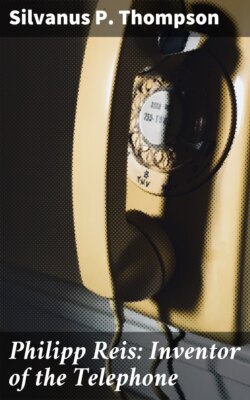Читать книгу Philipp Reis: Inventor of the Telephone - Silvanus P. Thompson - Страница 20
На сайте Литреса книга снята с продажи.
Fourth Form.—The Knitting-needle Receiver.
ОглавлениеFig. 22.
Fig. 23.
The final form adopted by Reis for his Reproducing-apparatus is that commonly known as the Knitting-needle Receiver. It differs only from the first form in that the needle and its surrounding spiral no longer stand upright on a violin, but lie horizontally upon a rectangular sounding-box of thin pine wood. The coil of silk-covered copper wire is wound upon a light wooden bobbin, instead of being twisted round the needle itself. Two wooden bridges stand upon the sounding-box, and through these pass the protruding ends of the needle, whilst an upper box or lid, hinged to the lower at the back, is added above. Figs. 22 and 23 show this form, the former being reproduced from Reis’s own Prospectus (see p. 85), the latter being from Müller-Pouillet’s ‘Text-book of Physics’ (see p. 95). Herr Albert, mechanician, of Frankfort, who made and sold the Reis telephones, says that the upper box was added at his suggestion. Originally it was so constructed (see Fig. 22), that when closed it pressed upon the steel needle. In the instruments of later date, the notches which fitted over the needle were cut so deeply (see Fig. 23), that the lid did not press upon the wire. Reis’s own instructions are (see p. 86) that the sound is intensified by firmly pressing the lid against the needle, as was done occasionally by the listeners who pressed their ears against the lid in order to hear more distinctly. The little key seen at the end of the sounding-box, in Fig. 22, was used for interrupting the current and so to telegraph back signals to the transmitter.
